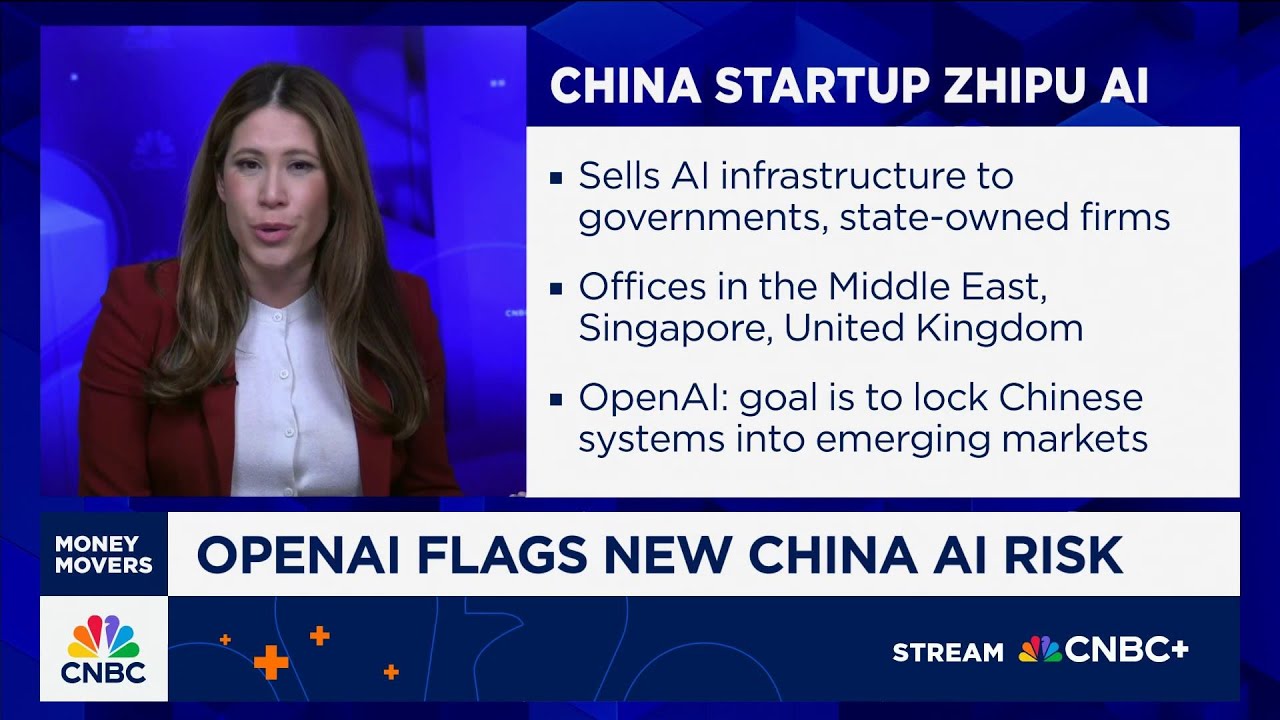OpenAI has raised concerns about Chinese startup Zhipu AI, which, backed by significant state funding and strategic ties, is rapidly expanding globally and challenging U.S. dominance in AI by leveraging open-source models and deep market integration. This development highlights a broader strategic shift, with China embracing open-source AI to accelerate innovation despite hardware limitations, while Western companies move toward proprietary models, creating a complex and competitive global AI landscape.
OpenAI has raised concerns about a rising Chinese startup called Zhipu AI, which it views as a significant threat to U.S. dominance in artificial intelligence. Zhipu AI, still relatively under the radar, is rapidly expanding its AI infrastructure across regions including Southeast Asia, the Middle East, Africa, and the UK. This expansion challenges U.S. efforts to promote American AI standards and counter China’s growing influence in the global AI landscape. The startup is likened to “Huawei 2.0” for AI, focusing less on raw performance and more on establishing deep market lock-in, similar to Huawei’s strategy in telecommunications.
Zhipu AI reportedly benefits from over $1.4 billion in state funding and maintains close ties to Chinese Premier Li Qiang and the Chinese military. It is also on the U.S. Entity List, which restricts its access to American technology for national security reasons. This company is part of a broader wave of Chinese AI firms, including DeepSea and Moonshot, that Beijing is actively promoting to compete on a global scale rather than just domestically. OpenAI’s warning highlights the strategic importance of these startups in China’s ambitions to dominate AI technology worldwide.
A critical aspect of the challenge posed by China is its use of open-source AI models, which are freely available and can be downloaded and deployed by anyone globally. Unlike hardware components such as Nvidia GPUs, which can be restricted or banned, open-source AI models are much harder to control once released online. China is leveraging this openness to accelerate its AI development through startups like Zhipu AI and DeepTech, while Western companies are moving toward more closed-source approaches, limiting access to their most advanced models.
This shift in strategy has significant implications for the future of AI development and control. Western companies like OpenAI have never open-sourced their top models, and even Meta, a former champion of open-source AI, is reportedly reconsidering its commitment to open-source models in favor of proprietary ones. This trend contrasts with China’s embrace of open-source AI, which could lead to foundational AI technologies being built on Chinese-developed code, posing a strategic risk to Western technological leadership.
Despite challenges such as limited access to the highest-end computing hardware, Chinese AI companies have demonstrated remarkable innovation and resilience. For example, DeepSea has managed to develop competitive AI models using lower-end GPUs. This resilience, combined with the open-source AI arms race, underscores the difficulty of containing China’s AI progress. The global AI landscape is thus becoming a complex battleground where open-source technology plays a pivotal role, making it harder for any one country to maintain exclusive dominance.
